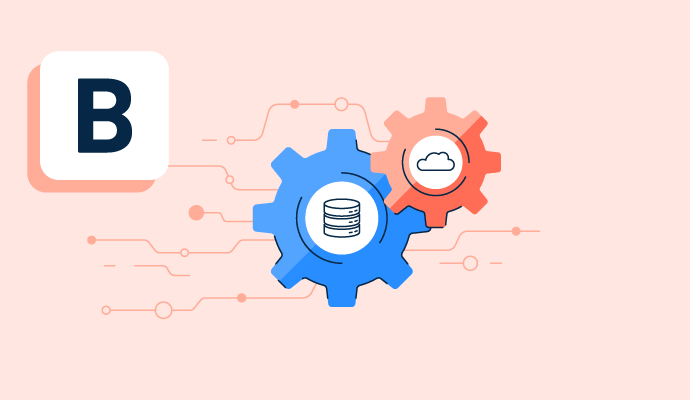O que é processamento em lote?
O processamento em lote é quando um computador completa grupos ou lotes de tarefas. O processo, às vezes chamado de automação de carga de trabalho (WLA) ou agendamento de tarefas, requer pouco esforço humano.
Uma vez iniciado o processo, o computador só para se descobrir um erro ou anormalidade, caso em que notifica um membro da equipe. Embora o processamento em lote possa ser inicialmente caro para implementar, ele pode economizar dinheiro para as empresas ao longo do tempo.
Empresas que precisam organizar grandes quantidades de dados usam sistemas de processamento e distribuição de big data. Essas soluções oferecem uma maneira para as empresas coletarem, distribuírem, armazenarem e gerenciarem conjuntos de dados massivos e não estruturados em tempo real. Elas também fornecem uma maneira de processar e distribuir dados entre clusters concorrentes paralelos de forma organizada.
Quando usar processamento em lote
Para muitas empresas, o processamento em lote é necessário para o sucesso diário. Elas devem considerar o processamento em lote quando as seguintes situações surgirem:
- O processo não requer informações em tempo real
- Grandes volumes de dados estão envolvidos
- O processo é repetitivo e não requer intervenção humana
- Os dados são avaliados em lotes em vez de fluxos
As empresas geralmente realizam o processamento em lote no final do dia para que recursos valiosos de computação sejam direcionados para outras atividades durante os horários de pico. Por exemplo, historicamente, os bancos usam sistemas de processamento em lote para gerar relatórios e finalizar todas as transações de cartão de crédito.
Benefícios do processamento em lote
O processamento em lote teve melhorias significativas desde sua criação. Diferente dos primeiros dias, as funções do processamento em lote moderno são completamente automatizadas. Além disso, não requer mais uma conexão com a internet para processar e pode ser executado de forma assíncrona.
Alguns outros benefícios do processamento em lote moderno incluem:
- Maior velocidade e menores custos. Como o processamento em lote muitas vezes não requer intervenção humana, o sistema é rápido e eficiente. A automação reduz despesas relacionadas às operações diárias de negócios.
- Recursos offline. Os sistemas de processamento em lote podem operar offline fora do horário comercial regular. Dessa forma, eles podem processar grandes quantidades de dados sem usar recursos de computação principais ou interromper as atividades diárias de uma empresa.
- Monitoramento mínimo. Após sua configuração inicial, o sistema de processamento em lote é automático. Os funcionários não precisam verificar constantemente seu progresso. Uma notificação será enviada ao membro da equipe apropriado se surgir um problema.
- Uma solução simples. O processo não requer nenhum software especializado ou entrada de dados extra. Após a configuração inicial do sistema, não há manutenção.
Desafios do processamento em lote
Embora existam muitas vantagens no processamento em lote, ele não é a resposta correta para as necessidades de todas as empresas. Alguns desafios do processamento em lote são:
- Treinamento de funcionários: Embora o processamento em lote seja um processo "configure e esqueça", ele requer treinamento inicial. Os funcionários precisam entender os gatilhos de lote, agendamento, notificações e erros.
- Depuração: Os gerentes devem saber como corrigir o sistema quando ocorrem erros. Como a depuração de sistemas de processamento em lote pode ser incrivelmente complexa, as empresas precisam treinar um funcionário interno para se especializar nesses sistemas ou contratar um consultor externo para ajudar.
- Custo: A infraestrutura necessária para o processamento em lote pode ser um investimento caro inicialmente. Para grandes organizações, os custos são mínimos. No entanto, os custos iniciais podem não ser viáveis para organizações menores.
Processamento em lote vs. processamento em fluxo
Para empresas que realizam regularmente grandes tarefas de computação manualmente, o processamento em lote pode ser uma maneira valiosa de preencher a lacuna por meio da automação. O processamento em lote também economiza grandes somas de dinheiro para as empresas ao longo do tempo. Seus usos mais comuns incluem processos de folha de pagamento, sistemas de e-mail, extratos bancários e faturamento de itens.
Uma alternativa ao processamento em lote é o processamento em fluxo. Como os dados são processados diretamente à medida que são recebidos, o processamento em fluxo faz sentido para sistemas que dependem de ter acesso a dados em tempo real. Esse tipo de processamento é benéfico para tarefas como cibersegurança e detecção de fraudes que demandam atenção imediata.
Em muitos casos, as empresas usam uma combinação de processamento em lote e processamento em fluxo para criar um fluxo de trabalho híbrido. Elas usam o processamento em lote para processar simultaneamente grandes lotes de dados e o processamento em fluxo para tarefas sensíveis ao tempo. Por exemplo, um sistema médico usa processamento em lote para tarefas como faturamento; no entanto, ele coleta informações de dispositivos médicos via processamento em fluxo.

Amanda Hahn-Peters
Amanda Hahn-Peters is a freelance copywriter for G2. Born and raised in Florida, she graduated from Florida State University with a concentration in Mass Media Studies. When she’s not writing, you’ll find Amanda coaching triathletes, cuddling up with a good book, or at the theater catching the latest musical.




















